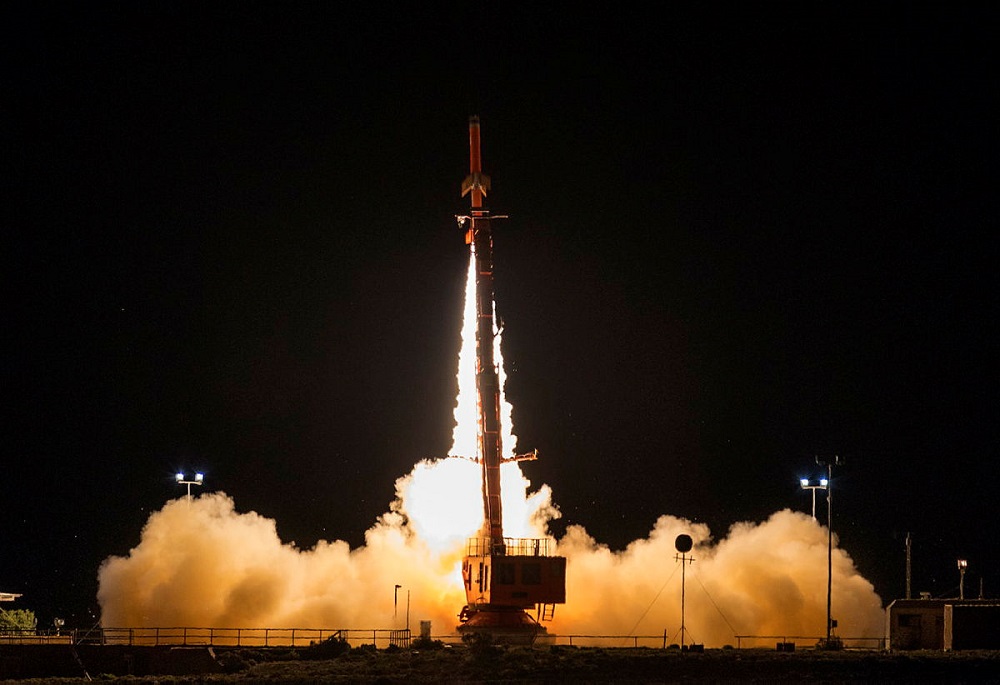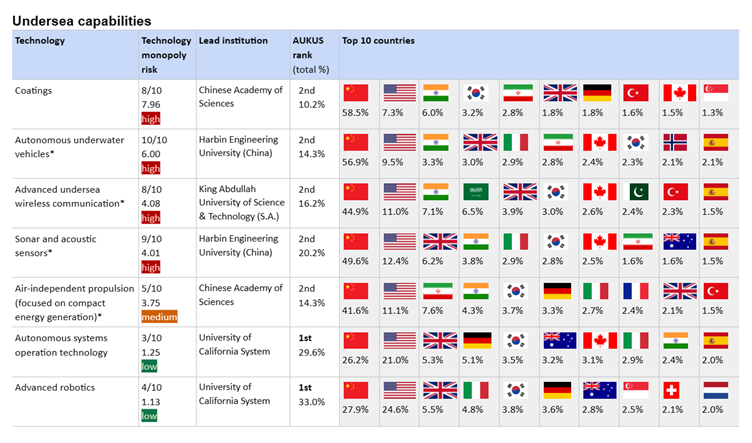
Much of the AUKUS discussion to date has focused on Pillar 1, the trilateral effort to support Australia acquiring
conventionally armed, nuclear-powered submarines. Yet achieving Pillar 2, the technology programs, is arguably both of greater long-term value and more strategically challenging.
Pillar 2 aims to enhance the US, UK and Australia’s technological edge—and, implicitly, to counter China’s technological advancements—by pooling resources in advanced military capability areas such as artificial intelligence, quantum computing, cyber technology, undersea capabilities, hypersonics and counter-hypersonics, electronic warfare, and information-sharing.
As China and others continue to make significant technological advances and invest heavily in emerging technologies, AUKUS countries cannot afford to regard the AUKUS pillars as sequential. Pillar 1 is some decades away: Pillar 2 is here and now and already promises to have wide-ranging effects on national security.
ASPI's
Critical Technology Tracker, released in March, revealed that China has laid the research foundations to position itself as the world’s leading science and technology superpower. It has established a sometimes
stunning lead in high-impact research—an important indicator clearly linked to technological breakthroughs and commercialisation—across 36 out of 44 critical technologies in defence, robotics, energy, biotechnology, advanced materials and other key fields.
Understandably, AUKUS partners have offered scant detail on specific technologies that underpin Pillar 2. Advanced military capabilities are not typically discussed in the public domain. Some research into AUKUS related technologies will likely never appear in public records. However, most of the means and tools to innovate and accelerate Pillar 2 are largely civilian. They sit outside defence in industry or academic institutions, such as Google, the global leader on natural language processing research. In that context, it makes sense to try to identify technologies most relevant to Pillar 2, and to map those countries and research institutions who hold advantage.
Our
new AUKUS Pillar 2 focused research ranks 23 technologies (seven of them new to the Tech Tracker) that, in our view, will be highly relevant to Pillar 2 advanced capability areas. The AUKUS related findings reveal an even
starker gap between countries than
our original findings. AUKUS related critical technologies are a two-horse race between China and the US, with various other nations—most often India—a distant third. That race appears far from equal. China holds a convincing lead in 19 of the 23 technologies evaluated. It dominates in hypersonics, electronic warfare and autonomous underwater vehicles, as well as in research into sonar and acoustic sensors. In each of these technologies, China’s output of high-impact research is at least three times greater than that of the US. It still holds a comfortable lead when compared to all three AUKUS countries combined.



(Extract from AUKUS RELEVANT TECHNOLOGIES: Top 10 country snapshot.)
China also leads, although by a narrower margin, on advanced cyber technologies, advanced robotics, post-quantum cryptography and quantum communications. The field is split on AI and autonomy technologies: China is further ahead in advanced data analytics, AI algorithms and hardware accelerators, adversarial AI and drones. For the time being, the US maintains its strength in quantum computing (18.9% ahead of China), but its lead on AI technologies such as advanced integrated circuit design and natural language processing, is almost too close to call—the margin is less than 3%. Quantum sensors really
is too close to call, with the US ahead by a mere 0.4%.
ASPI also looked at where leading institutions are based, and where their talent comes from. For some technologies, at least nine of the world’s top 10 research institutions are based in China (for autonomous underwater vehicles it is all of the top 10), and they are collectively generating eight times more high-impact research papers than the second-ranked country (the US in all cases).
Chinese defence universities feature regularly: China’s National University of Defense Technology leads in electronic warfare and advanced aircraft engines; the Chinese Academy of Sciences is prolific on technologies such as coatings, air-independent propulsion and data analytics; and Harbin Engineering University is a leader on sonar and acoustic seniors and autonomous underwater vehicles.
These results require some caveats and interpretation. First, Pillar 2 is about emerging technologies, and the sample size of research papers is smaller in some of these emerging technologies than for more established techs. Second, research should be seen in the broader context of development and delivery. In some cases, a country may be further ahead on research because it leads across the entire value chain of a particular technology (research, commercialisation, manufacturing, supply). This applies, for example, to China’s huge leads in
electric batteries and in
hypersonics). In some cases though, a research lead may represent concerted effort by universities, national labs and companies to catch up. For example, China’s excellent research performance in advanced aircraft engines is not yet reflected in real world production, but an effort to address an
identified vulnerability—its almost total reliance on US and Swedish companies for the precision-grade stainless steel needed for high performance aircraft engine bearings. Finally, research investment can take time to bear fruit in the form of publications. China’s purported
$15.3b funding for quantum technologies (2021-2025) is more than double that of EU governments and more than eight times the amount committed by the US, but the Technology Tracker, as a snapshot of research to date, does not yet reflect that investment boost.
Despite such caveats, the results are striking. The current concentration of expertise is likely to result in breakout capability and technology monopoly risk, underscoring the need for AUKUS countries to rapidly deepen their collaboration to ensure future freedom of action, including through access to trusted, secure critical technology supply chains. Combined, AUKUS countries would assume a slim lead in certain undersea capabilities research, such as autonomous systems operations technology and advanced robotics. AUKUS would also nudge ahead of China on advanced cyber technologies such as adversarial AI and protective cybersecurity technologies. While there are some early indicators that such
collaboration is underway significant challenges (
well-documented elsewhere) remain.
China’s lead is so great across a number of technology areas that no aggregation of countries exceeds its share. A slightly larger grouping of countries would improve the picture though. AUKUS is a technology-sharing agreement, rather than a military alliance. It does not necessarily preclude its members from collaborating—individually or collectively—on accelerated tech development or transfer with traditional Five Eyes partners such as Canada (top 10 in 15 of the 24 technologies) or more recent groupings such as the Quad (Japan’s strengths lie in hypersonics and quantum technologies, while
India sits in the top 10 for all 24 technologies).
Australia punches above its weight in areas like quantum, AI and cyber (including in the new category of ‘adversarial AI-reverse engineering’, where we rank no.3 in the world), but as the smallest member of the arrangement it should actively pursue all options to secure ongoing access to AUKUS Pillar 2 technologies. As we argue in our
recommendations, to do so it will likely need both to build—establishing an investment and taxation framework that nurtures
talent pipelines for students and technologists at the forefront of critical technology research, and drives commercialisation—as well as buy, developing global partnerships, through ‘friend-shoring’ and R&D grants between like-minded countries that play to Australia’s strengths.
 Print This Post
Print This Post


